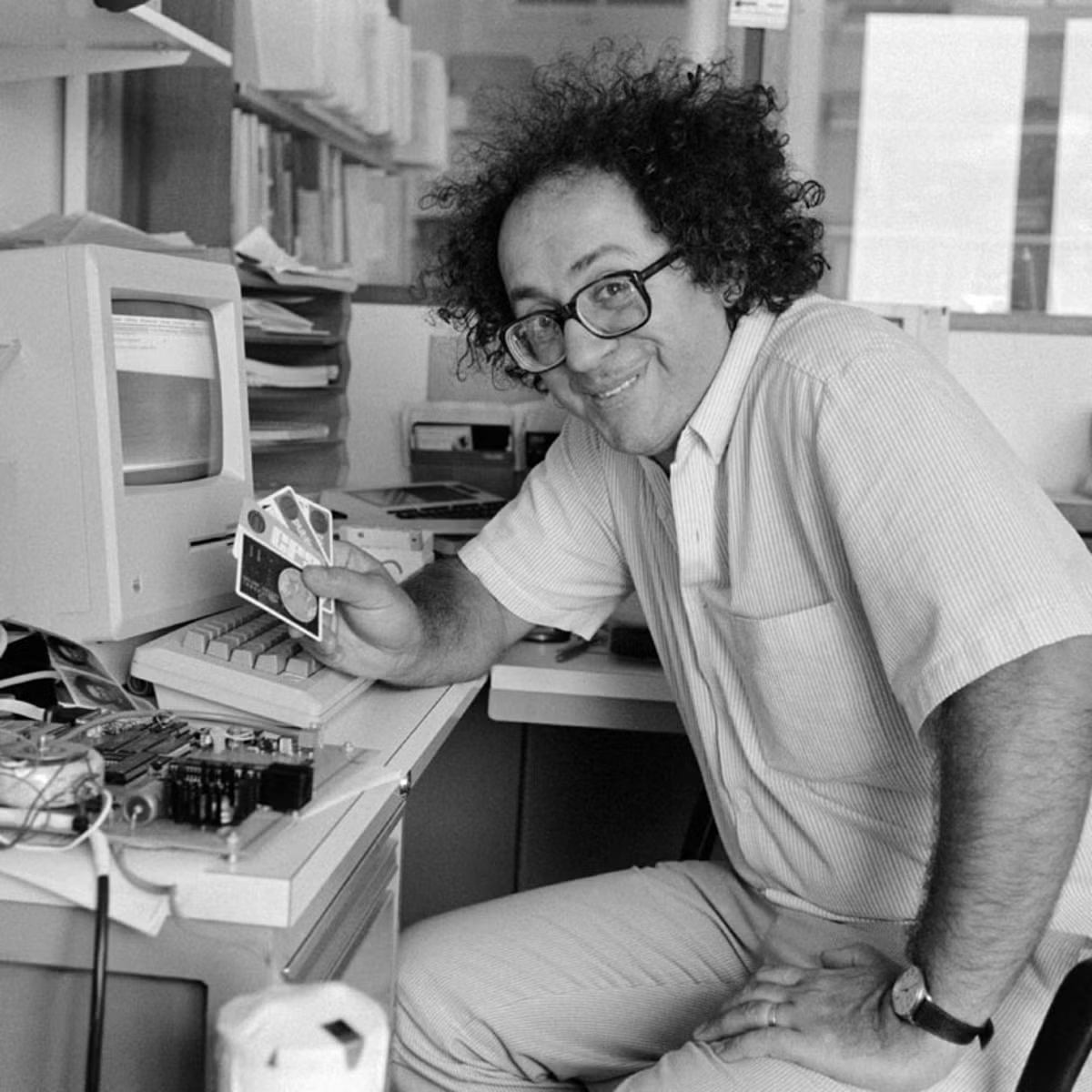Introduction
Welcome to the fascinating world of Wi-Fi! In today’s connected era, where we rely heavily on wireless internet for communication and access to information, it is essential to understand the origins and evolution of this incredible technology. Wi-Fi has become such an integral part of our lives that it’s hard to imagine a time without it.
But have you ever wondered how Wi-Fi came to be? Who were the brilliant minds behind its invention? How does it work? In this article, we will delve into the history, development, and workings of Wi-Fi, taking you on a journey of discovery.
At its core, Wi-Fi is a technology that allows devices to connect to the internet wirelessly using radio waves. It has revolutionized the way we communicate, work, and interact with the world around us. From browsing the web on a laptop to streaming movies on a smart TV or even controlling smart home devices through our smartphones, Wi-Fi has profoundly impacted our daily lives.
Wireless communication, on which Wi-Fi is based, has a long and remarkable history that dates back to the late 19th century. However, the concept of Wi-Fi as we know it today began to take shape in the 1990s when the need for a wireless alternative to connect computers and devices became increasingly apparent.
The birth of Wi-Fi can be attributed to a combination of factors, including advancements in technology, the demand for convenience, and the desire for a standardized wireless networking solution. This led to the creation of the Institute of Electrical and Electronics Engineers (IEEE) 802.11 standard, which laid the foundation for the Wi-Fi we use today.
With the groundwork laid, the subsequent decades saw the continuous evolution and improvement of Wi-Fi. We witnessed the emergence of different Wi-Fi standards, each offering faster speeds, better stability, and increased coverage. This evolution has been instrumental in shaping the modern wireless landscape and enabling the proliferation of connected devices.
In this article, we will explore the origins of wireless communication, the specific frequencies utilized by Wi-Fi, the contributions of inventors like Hedy Lamarr, the role of standardization organizations like IEEE, and how Wi-Fi actually works. We will also touch upon the widespread adoption and future advancements of this transformative technology.
So, get ready to dive deep into the world of Wi-Fi and discover the incredible journey that has brought us to the wireless revolution we enjoy today.
The Origins of Wireless Communication
The concept of wireless communication, the foundation upon which Wi-Fi was later built, can be traced back to the late 19th century. It was during this time that inventors and scientists began to explore the possibility of transmitting information through the air without the need for physical wires.
One of the key pioneers in wireless communication was Guglielmo Marconi, an Italian inventor and engineer. In 1895, Marconi successfully conducted experiments in which he transmitted Morse code signals over a distance of several kilometers, marking the birth of practical wireless communication.
Marconi’s achievement sparked a wave of interest among inventors and scientists around the world. They recognized the immense potential of wireless communication and began to develop and improve upon Marconi’s groundbreaking work.
During the early 20th century, advancements in radio technology paved the way for the commercialization and widespread adoption of wireless communication. Radios became a common household item, allowing people to listen to news, music, and entertainment programs from around the world.
Parallel to the development of radio, significant progress was made in the field of telegraphy. The invention of the telegraph and later the telephone laid the groundwork for transmitting information over long distances using electrical signals.
However, it was not until the mid-20th century that wireless communication truly took off with the invention of the transistor. Transistors replaced bulky vacuum tubes, making it possible to create smaller and more efficient electronic devices. This breakthrough led to the development of portable radios, walkie-talkies, and other portable communication devices.
Throughout the first half of the 20th century, wireless communication continued to advance, with researchers exploring different frequency ranges and modulation techniques. The use of higher frequencies allowed for greater bandwidth and faster transmission speeds, while advancements in modulation techniques improved the efficiency and reliability of wireless communication.
By the 1970s, the concept of local area networks (LANs) had emerged. LANs allowed computers and other devices to be interconnected within a limited geographical area, enabling information sharing and resource sharing. However, these early LANs relied on physical connections, limiting their range and flexibility.
The stage was set for the next major breakthrough in wireless communication, which would pave the way for the invention of Wi-Fi. As the demand for wireless connectivity grew, researchers and inventors began to explore the possibility of developing a wireless networking solution that could connect devices without the need for physical connections.
In the next section, we will explore how the birth of Wi-Fi transformed the landscape of wireless communication and revolutionized the way we connect and communicate.
The Birth of Wi-Fi
The birth of Wi-Fi can be attributed to a convergence of technological advancements and the growing need for a wireless networking solution. In the early 1990s, as personal computers became more prevalent, the idea of connecting them wirelessly gained traction. This marked the beginning of a new era in wireless communication.
The term “Wi-Fi” itself was coined by the Wireless Ethernet Compatibility Alliance (WECA), an organization formed in 1999 to promote wireless Local Area Network (LAN) technology based on the IEEE 802.11 standards. The name “Wi-Fi” was meant to evoke a sense of wireless fidelity and to differentiate it from other wireless technologies.
Before Wi-Fi came into existence, various wireless technologies were available, but they were not standardized or interoperable. This lack of standardization hindered widespread adoption and compatibility between devices. The need for a common, universal wireless networking solution led to the formation of the Institute of Electrical and Electronics Engineers (IEEE) 802.11 Working Group.
The IEEE 802.11 Working Group was tasked with developing a set of standards that would define how devices could communicate wirelessly. This group eventually released the IEEE 802.11 standard in 1997, which outlined the specifications for wireless LANs using radio frequencies.
With the release of the IEEE 802.11 standard, manufacturers started producing devices that were compatible with the standard, paving the way for the birth of Wi-Fi. Companies like Apple, Lucent Technologies, and 3Com were among the early adopters, launching Wi-Fi products that allowed users to connect their devices to wireless networks.
Initially, Wi-Fi technology operated in the 2.4 GHz frequency band, which was unlicensed and widely available for public use. The 2.4 GHz band provided a good balance between range and data throughput, making it suitable for most consumer applications. However, with the increasing number of devices using this frequency band, congestion became an issue, leading to slower speeds and decreased performance.
To overcome this challenge, the IEEE introduced the 802.11a standard in 1999, which operated in the 5 GHz frequency band. This higher-frequency band offered more bandwidth, reducing interference and providing faster data rates. However, due to cost and compatibility issues, the 802.11a standard did not gain widespread adoption.
In 2003, the IEEE released the 802.11g standard, which combined the best of both worlds. It operated in the 2.4 GHz band, ensuring compatibility with existing devices, while providing faster speeds similar to the 802.11a standard. This standard became the most widely adopted and popular version of Wi-Fi at the time, enabling faster and more reliable wireless connectivity.
In the next section, we will explore the specific frequencies behind Wi-Fi and how they contribute to its performance and capabilities.
The Frequencies behind Wi-Fi
Wi-Fi technology operates within specific frequency bands, which determine its performance, range, and compatibility with other devices. Here, we will explore the frequencies used by Wi-Fi and their impact on wireless communication.
The two primary frequency bands used by Wi-Fi are the 2.4 GHz and 5 GHz bands. Wi-Fi devices are designed to operate in one or both of these frequency ranges, depending on the supported Wi-Fi standards.
The 2.4 GHz band, the older and more widely used band, provides good range and signal penetration through obstacles such as walls and furniture. It is also less affected by interference from other electronic devices, making it ideal for home and small office environments.
However, due to its popularity, the 2.4 GHz band is congested and can experience interference from other devices like Bluetooth devices, cordless phones, and microwaves. This congestion can lead to slower speeds and degraded performance in areas with numerous Wi-Fi networks.
To address these challenges, the 5 GHz band was introduced. The 5 GHz band offers more available channels, reduces interference from other devices, and supports higher data rates. It is well-suited for high-density environments such as apartment complexes, office buildings, and public spaces with multiple Wi-Fi networks.
However, the 5 GHz band has a shorter range and less penetration through obstacles compared to the 2.4 GHz band. This means that Wi-Fi signals may not reach as far or provide the same coverage, requiring more access points to ensure reliable connectivity.
In terms of Wi-Fi standards, the 2.4 GHz band is utilized by the IEEE 802.11b, 802.11g, and 802.11n standards, while the 5 GHz band is used by the 802.11a, 802.11n, and 802.11ac standards. It’s important to note that newer Wi-Fi standards, such as 802.11ac and 802.11ax (Wi-Fi 6), support both 2.4 GHz and 5 GHz bands, providing greater flexibility and compatibility with a wide range of devices.
When selecting the frequency band for Wi-Fi usage, it’s crucial to consider factors such as the environment, the number of devices connected, and the desired range and performance. To optimize performance, it may be advisable to use the 5 GHz band in areas with high network congestion or where greater speeds are required, while using the 2.4 GHz band for wider coverage and better signal penetration.
Understanding the frequencies behind Wi-Fi is crucial for deploying reliable and efficient wireless networks. In the next section, we will explore the evolution of Wi-Fi standards and how they have contributed to the continuous improvement of wireless connectivity.
The Evolution of Wi-Fi Standards
Wi-Fi technology has undergone significant evolution since its inception, with advancements in standards driving improvements in speed, range, reliability, and compatibility. In this section, we will explore the evolution of Wi-Fi standards and their impact on wireless connectivity.
The first widely adopted Wi-Fi standard was IEEE 802.11b, introduced in 1999, which operated in the 2.4 GHz frequency band and offered a maximum data rate of 11 Mbps. It quickly gained popularity due to its compatibility with existing devices and its affordable price point.
Building upon the success of 802.11b, the IEEE released the 802.11a and 802.11g standards. While 802.11a operated in the 5 GHz band and offered faster data rates, it faced limited adoption due to the higher cost of equipment and compatibility issues with existing devices. On the other hand, 802.11g, operating in the 2.4 GHz band, combined the range and compatibility of 802.11b with the higher speeds of 802.11a, making it the most widely adopted standard at the time.
As the demand for faster wireless connectivity grew, the IEEE introduced the 802.11n standard in 2009. This standard brought significant improvements in speed, range, and overall performance. It introduced MIMO (Multiple-Input Multiple-Output) technology, allowing devices to transmit and receive data using multiple antennas simultaneously, resulting in higher data rates and improved reliability.
In 2013, the 802.11ac standard was introduced, taking Wi-Fi speeds to even greater heights. Operating in the 5 GHz band, 802.11ac supported wider channels and offered multiple streams, enabling data rates of up to several gigabits per second. This standard was a significant leap forward, catering to the increasing demand for bandwidth-intensive applications such as HD video streaming, online gaming, and large file transfers.
Today, the latest Wi-Fi standard is 802.11ax, also known as Wi-Fi 6. Released in 2019, Wi-Fi 6 introduces technologies such as OFDMA (Orthogonal Frequency Division Multiple Access) and MU-MIMO (Multi-User Multiple-Input Multiple-Output), which further enhance efficiency and capacity in high-density environments with multiple devices connected simultaneously. It offers faster speeds, reduced latency, and improved battery life for devices.
With each new Wi-Fi standard, backward compatibility with older standards is ensured, allowing devices to connect to Wi-Fi networks of different generations. This compatibility enables seamless connectivity and ensures that older devices can still benefit from the performance enhancements of newer standards.
As technology continues to evolve, there are ongoing developments in Wi-Fi standards to meet the ever-growing demands of connected devices and emerging applications. The continuous improvement of Wi-Fi standards is essential for supporting the increasing number of devices and enabling the next wave of innovations in wireless connectivity.
In the next section, we will explore the often-overlooked contributions of Hedy Lamarr, an actress and inventor whose work laid the groundwork for modern wireless communication.
The Contributions of Hedy Lamarr
While the development of Wi-Fi technology involved the contributions of many brilliant minds, one often overlooked figure is Hedy Lamarr. Primarily known as a glamorous actress during Hollywood’s Golden Age, Lamarr also made significant contributions to the field of wireless communication.
Born in Austria in 1914, Lamarr had a deep fascination with science and technology. During World War II, she co-invented a frequency-hopping system, along with composer George Antheil, which aimed to prevent enemy interception of radio-guided torpedoes.
At the time, radio-controlled torpedoes were vulnerable to jamming by the enemy. Lamarr and Antheil’s frequency-hopping system worked by rapidly changing the transmitting frequency of the torpedo’s guidance signal, making it difficult for the enemy to intercept and jam the signal.
They achieved this by synchronizing a piano player’s rolls with radio transmissions, allowing for precise coordination of frequency changes in both the transmitter and the receiver. While their invention was not immediately recognized or implemented by the US Navy, it laid the foundation for future developments in wireless communication.
Fast forward a few decades, and Lamarr’s frequency-hopping technology became the basis for modern spread-spectrum communication. Spread spectrum techniques, derived from Lamarr’s invention, are now widely used in various wireless technologies, including Wi-Fi, Bluetooth, and cellular networks.
Lamarr’s contributions to wireless communication were only fully recognized later in her life when she received several awards and accolades for her groundbreaking work. In 1997, she was honored with the Electronic Frontier Foundation’s Pioneer Award, acknowledging her significant contribution to the field of technology.
While Lamarr is primarily remembered for her acting career, her inventive spirit and groundbreaking work have cemented her legacy as a pioneer in wireless communication. Her contributions paved the way for technologies that have revolutionized the way we connect and communicate today.
Next, we will explore the role of the Institute of Electrical and Electronics Engineers (IEEE) in standardizing Wi-Fi and shaping the wireless networking landscape.
The Role of IEEE in Wi-Fi Standardization
The Institute of Electrical and Electronics Engineers (IEEE) has played a crucial role in the standardization of Wi-Fi, ensuring interoperability, compatibility, and the continued evolution of wireless networking technology. IEEE’s contributions have been instrumental in shaping the landscape of Wi-Fi and enabling its widespread adoption.
The IEEE is a renowned professional association that focuses on advancing technological innovation for the benefit of society. It provides a platform for researchers, engineers, and industry experts to collaborate, share knowledge, and develop standards for various technologies, including Wi-Fi.
In the early 1990s, as the need for a standardized wireless networking solution became evident, the IEEE formed the 802.11 Working Group. This group was tasked with developing a set of standards that would define how devices could communicate wirelessly and ensure compatibility between different manufacturers’ products.
Under the guidance of the 802.11 Working Group, the IEEE released the first Wi-Fi standard, IEEE 802.11, in 1997. This standard incorporated the initial specifications for wireless LANs, defining important aspects such as frequency bands, data rates, and modulation techniques.
The IEEE 802.11 standard laid the foundation for subsequent Wi-Fi standards and established a framework for the evolution and improvement of wireless technology. It allowed for predictable and consistent performance of Wi-Fi devices, ensuring interoperability across different manufacturers and eliminating compatibility issues.
Over the years, the IEEE has continued to release new versions of the 802.11 standard, each bringing significant improvements in speed, range, security, and overall performance. These advancements in Wi-Fi technology have been made possible through the collaborative efforts of engineers, researchers, and industry leaders within the IEEE community.
One of the key contributions of the IEEE is its role in ensuring backward compatibility between different Wi-Fi standards. This means that devices conforming to newer standards can still communicate with devices that adhere to older standards. This compatibility allows for a smooth transition and provides users with the flexibility to upgrade their devices or networks without rendering existing equipment obsolete.
Moreover, the IEEE facilitates the development of industry-wide consensus through open discussions, debates, and voting on proposed changes and additions to Wi-Fi standards. This transparent and collaborative approach ensures that the standards are inclusive, equitable, and representative of the diverse needs of users and stakeholders.
The IEEE’s involvement in Wi-Fi standardization has been a driving force behind the continuous improvement and evolution of wireless networking technology. By setting the standards and providing a platform for innovation, the IEEE has empowered manufacturers to develop Wi-Fi-enabled devices that meet the demands of an ever-connected world.
In the next section, we will explore how Wi-Fi works, diving into the technical aspects of this revolutionary wireless technology.
How Wi-Fi Works
Wi-Fi, short for “Wireless Fidelity,” is a technology that allows devices to connect to the internet and communicate with each other wirelessly. But how does Wi-Fi actually work? In this section, we will dive into the technical aspects of Wi-Fi and examine the process behind its operation.
At its core, Wi-Fi relies on radio waves to transmit and receive data. The process begins with a Wi-Fi router, which acts as the central hub for the wireless network. The router is connected to the internet and is responsible for broadcasting the Wi-Fi signal.
Wi-Fi operates within specific frequency bands, such as 2.4 GHz or 5 GHz, as designated by the IEEE 802.11 standards. These frequency bands provide the medium for data transmission between devices.
When a Wi-Fi-enabled device, such as a smartphone or laptop, is in range of a Wi-Fi network, it searches for available networks and displays a list of options. The user selects the desired network and initiates the connection process.
At this point, a handshake process begins between the device and the Wi-Fi router. The device sends a connection request, and the router responds by verifying the credentials and establishing a secure connection.
Once the connection is established, the device and the router can exchange data. The device can send requests for information, such as loading a webpage, and the router delivers the requested data from the internet. Conversely, the device can send data, such as a file upload, and the router forwards it to the intended recipient on the network or the internet.
Wi-Fi uses a technique called “Carrier Sense Multiple Access with Collision Avoidance” (CSMA/CA) to manage multiple devices attempting to transmit data simultaneously. CSMA/CA ensures that devices take turns transmitting data and avoid collisions that can occur when multiple devices try to transmit at the same time.
Another important aspect of Wi-Fi is its security. Wi-Fi networks can be secured using various protocols, such as WPA2 (Wi-Fi Protected Access 2) or WPA3, which encrypt the data being transmitted over the network. Encryption helps protect the privacy and security of users’ data, preventing unauthorized access to sensitive information.
To ensure seamless coverage throughout an area, multiple Wi-Fi routers can be deployed as part of the same network. This creates a “mesh” or “wireless mesh” network, where devices can seamlessly switch between routers as they move within the coverage area, maintaining a continuous connection without interruption.
Wi-Fi technology continues to evolve, with each new generation bringing faster speeds, greater efficiency, and improved performance. The latest Wi-Fi standard, Wi-Fi 6 (IEEE 802.11ax), offers enhanced capabilities for handling multiple devices and maintaining high-speed connections even in congested environments.
Understanding how Wi-Fi works provides insight into the remarkable technology that enables wireless connectivity in our everyday lives. In the next section, we will explore the adoption and advances of Wi-Fi and its impact on our society.
Wi-Fi Adoption and Advances
Since its inception, Wi-Fi has enjoyed widespread adoption and continuous advancements, revolutionizing the way we connect, communicate, and interact with technology. In this section, we will explore the adoption of Wi-Fi and the key advances that have propelled it to become an integral part of modern society.
Wi-Fi has witnessed remarkable adoption across various sectors, including homes, businesses, educational institutions, public spaces, and even transportation systems. Its convenience, flexibility, and affordability have made Wi-Fi the go-to choice for wireless connectivity.
In homes, Wi-Fi has become a cornerstone of our digital lifestyles. It enables us to stay connected, stream entertainment, work remotely, and control smart devices seamlessly. Wi-Fi has empowered families to create connected homes, enabling smart home automation and the Internet of Things (IoT) devices to enhance comfort, convenience, and energy efficiency.
Businesses and organizations, ranging from small startups to large enterprises, heavily rely on Wi-Fi to enable seamless communication, collaboration, and productivity. Wi-Fi networks provide employees and guests with internet access, facilitate wireless file sharing, and support various applications essential for day-to-day operations.
In the education sector, Wi-Fi has transformed classrooms into hubs of digital learning. It allows students to access educational resources, collaborate on projects, and connect with teachers and peers. Wi-Fi-enabled campuses provide a rich learning environment, fostering innovation, creativity, and personalized education.
Public spaces, such as airports, cafes, and shopping centers, have embraced the convenience of Wi-Fi connectivity. This has become an expectation of consumers who seek to stay connected wherever they go. Wi-Fi access not only enhances the customer experience but also enables businesses to offer location-based services and targeted advertising.
The adoption of Wi-Fi has been further fueled by continuous technological advances. Each generation of Wi-Fi standards, from 802.11b to 802.11ax (Wi-Fi 6), has brought significant enhancements in speed, capacity, and performance. These advancements have allowed for faster internet speeds, reduced latency, and more reliable connections.
Alongside speed improvements, Wi-Fi technology has evolved to accommodate the increasing number of devices connected to networks simultaneously. Technologies like MU-MIMO (Multi-User Multiple-Input Multiple-Output) and OFDMA (Orthogonal Frequency Division Multiple Access) in Wi-Fi 6 enable more efficient utilization of network resources, enhancing the overall experience in crowded environments.
Furthermore, the industry has continued to refine Wi-Fi security protocols. WPA2 and WPA3 have introduced stronger encryption, authentication methods, and safeguards against various cyber threats, ensuring the privacy and security of Wi-Fi users.
Looking ahead, Wi-Fi is poised to witness even greater adoption and advancements. The upcoming Wi-Fi 6E standard will utilize the 6 GHz frequency band, offering more spectrum for faster speeds and minimizing congestion. This will further enhance the capabilities of Wi-Fi, enabling applications like virtual reality, augmented reality, and real-time streaming at unprecedented levels.
Overall, Wi-Fi adoption has transformed the way we live, work, and play. Its widespread use, continuous advances, and adaptability have made Wi-Fi an indispensable technology in our increasingly connected world.
To wrap up our exploration of Wi-Fi, we will reflect on the impact it has had on society and consider its promising future.
Conclusion
Wi-Fi has undoubtedly become an indispensable technology that has revolutionized the way we connect, communicate, and interact with the digital world. From its humble beginnings to the widespread adoption we see today, Wi-Fi has continuously evolved and improved, providing seamless wireless connectivity to millions of users around the globe.
We explored the origins of wireless communication, tracing the footsteps of inventors and pioneers who laid the foundation for Wi-Fi. The birth of Wi-Fi itself was a result of technological advancements and the need for a standardized wireless networking solution. The IEEE played a pivotal role in developing and maintaining Wi-Fi standards, ensuring compatibility and interoperability across devices.
Understanding the frequencies behind Wi-Fi shed light on how different bands affect performance and range, while the evolution of Wi-Fi standards showcased the continuous advancements that have resulted in faster speeds, greater efficiency, and improved capacity.
We cannot overlook the contributions of Hedy Lamarr, whose inventive spirit shaped the course of wireless communication with her frequency-hopping invention, laying the groundwork for technologies used in Wi-Fi and beyond.
Exploring how Wi-Fi works, we delved into the technical aspects of data transmission, security measures, and the role of Wi-Fi routers in facilitating wireless connectivity.
Wi-Fi adoption has been tremendous, spanning homes, businesses, education, and public spaces. Its widespread use has been made possible by continuous technological advancements, supporting the increasing number of connected devices and driving improvements in speed, capacity, and performance.
Looking forward, the future of Wi-Fi is promising with the upcoming Wi-Fi 6E standard offering even faster speeds and expanded coverage in the 6 GHz frequency band. This will unlock new opportunities for innovative applications and enrich our wireless experiences.
In summary, Wi-Fi has transformed the way we live and interact with technology. Its convenience, flexibility, and reliability have made it a cornerstone of our digital lives. As Wi-Fi continues to evolve, we can expect even more exciting advancements that will shape the future of wireless connectivity.

























